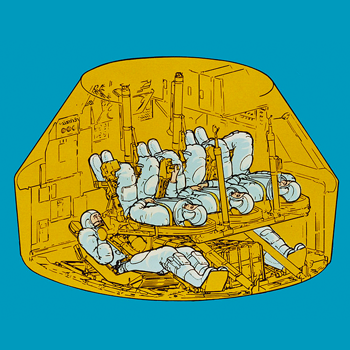How do scientists isolate DNA in order to study it?
1 Answer
There are a couple of steps to do this, please ignore my bad English, I hope you can still understand the process.
Explanation:
This is not as difficult as you might think.
Let's say we want to isolate DNA out of a calf thymus, you need to follow these instructions (they are the same for an apple as far as I know, but there are tiny variations):
-
Take 3 pieces of 3 grams and cut it in tiny pieces, as tiny as possible.
-
Put it in a blender, with 75 mL Saline-sodium citrate (SSC) per piece and make sure the blade of the blender is completely covered in SSC, so add a piece of thymus if you need to.
SSC makes sure the cell membranes are being dissolved.
Keep blending until everything is smooth. -
Put it in a tube for the centrifuge and tare it with another tube so the centrifuge doesn't break
-
Place the tube in the centrifuge for 20 minutes at 5000 rpm
-
When you get the tubes out of the centrifuge you should see holds two components. The bottom has a solid substance, this is called the pellet and this holds the cell nuclei with the DNA. You will also see a liquid substance, which is called the supernatant and this consists of the SSC with the dissolved cell membranes.
-
Pour away the supernatant in one fluid movement, this is called decanting and this leaves you with the pellet.
-
Put a small amount of 2.2 M NaCl in the tube with the pellet, so that the pellet is just covered in NaCl. NaCl causes the proteins that surround the DNA to precipitate.
-
Stir it with an empty test tube or stirring rod. Eventually you should get two components. The proteins on the bottom and a viscous fluid on top of that.
-
Take out the viscous fluid with a pipette and make sure you don't take any proteins with the viscous fluid. (very small pieces of protein are very difficult to avoid, but try to avoid as many proteins as possible)
-
Put the viscous fluid that you pipeted in a beaker and add 2x as much ethanol to it. But add the ethanol gently because you don't want to mix it with the DNA. At the interface between the ethanol and the viscous fluid you should see DNA bubbles coming up.
-
Gently stir with a glass rod, the DNA is negatively charged so it should stick to the rod.
-
Put it in a test tube and dissolve it with SSC.
A special machine can then tell you how much DNA you have isolated and how pure it is.

